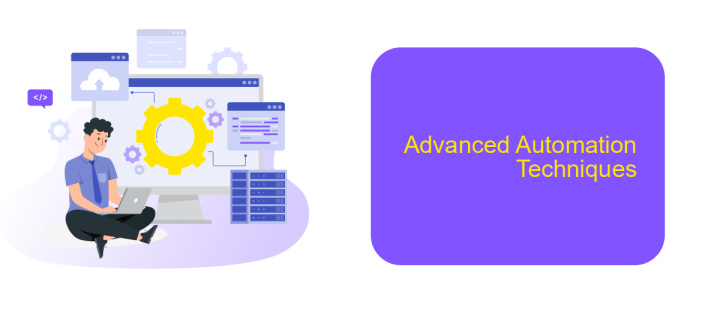Wrike Automation Workflow
In today's fast-paced business environment, efficiency and productivity are paramount. Wrike Automation Workflow offers a powerful solution to streamline your project management processes. By automating repetitive tasks and integrating seamlessly with your existing tools, Wrike helps teams focus on what truly matters. Discover how Wrike Automation Workflow can transform your operations and drive your business forward.
Introduction to Wrike Automation
Wrike Automation is a powerful feature designed to streamline your project management processes by automating repetitive tasks. This functionality allows teams to focus on more strategic activities, improving overall efficiency and productivity. Whether you're managing simple projects or complex workflows, Wrike Automation can significantly reduce the manual effort required to keep everything on track.
- Automate task assignments and updates
- Set up custom triggers and actions
- Integrate with third-party tools for seamless workflows
- Monitor project progress and receive automated reports
One of the key advantages of Wrike Automation is its ability to integrate with various services, such as ApiX-Drive. ApiX-Drive facilitates the connection between Wrike and other applications, allowing for a smooth data flow and enhanced automation capabilities. By leveraging these integrations, you can create a more cohesive and efficient project management environment, ensuring that all your tools work together harmoniously.
Key Benefits of Using Wrike Automation

Wrike Automation streamlines project management by automating repetitive tasks, allowing teams to focus on high-priority activities. This leads to increased productivity as manual processes are minimized, reducing the likelihood of human error. Automated workflows ensure that tasks are completed on time, enhancing overall project efficiency and consistency. Additionally, Wrike Automation provides real-time updates and notifications, ensuring that all team members are on the same page and can respond promptly to any changes or issues.
Another significant benefit of using Wrike Automation is its ability to integrate seamlessly with various tools and platforms, enhancing workflow flexibility. For instance, integrating with services like ApiX-Drive allows for effortless data synchronization between Wrike and other applications, ensuring that information is always up-to-date across systems. This not only saves time but also eliminates the need for manual data entry, further reducing errors and streamlining operations. By leveraging these integrations, organizations can create a more cohesive and efficient work environment, ultimately driving better project outcomes.
A Step-by-Step Guide to Creating an Automated Workflow

Creating an automated workflow in Wrike can significantly enhance your team’s productivity and efficiency. Follow these steps to set up your automated workflow seamlessly:
- Navigate to the 'Automation' tab in your Wrike workspace.
- Click on 'Create Rule' to start a new automation rule.
- Select a trigger for your automation, such as a task status change or a new task creation.
- Choose the actions that should follow the trigger, like assigning tasks, updating statuses, or sending notifications.
- Configure any necessary conditions to ensure the rule applies only in specific scenarios.
- Review your automation rule and click 'Save' to activate it.
For advanced integrations, consider using ApiX-Drive to connect Wrike with other tools your team uses. ApiX-Drive simplifies the integration process, allowing you to create a seamless workflow across multiple platforms without needing extensive technical skills. By automating repetitive tasks and integrating essential services, you can focus more on strategic work and less on manual processes.
Advanced Automation Techniques

For those looking to take their Wrike automation to the next level, advanced techniques offer a plethora of options. These methods not only save time but also significantly enhance productivity by reducing manual intervention.
One of the most powerful features is the ability to create conditional workflows. By setting up triggers based on specific criteria, tasks can be automatically assigned, updated, or moved between different stages of a project. This ensures that the right people are notified at the right time, streamlining the entire workflow process.
- Integrate with third-party services using tools like ApiX-Drive to automate data transfer between Wrike and other platforms.
- Utilize custom fields to capture and automate unique project requirements.
- Set up automated status updates to keep stakeholders informed without manual reporting.
Advanced automation techniques in Wrike not only help in managing complex projects but also allow teams to focus on strategic tasks rather than getting bogged down by routine activities. By leveraging these techniques, organizations can achieve higher efficiency and better project outcomes.


Best Practices for Wrike Automation
To maximize the efficiency of your Wrike automation workflows, it is crucial to start with a clear understanding of your project requirements and goals. Begin by mapping out your workflow processes and identifying repetitive tasks that can be automated. Use Wrike's built-in templates and customization options to tailor the automation to your specific needs. Ensure that your team is trained on how to use these automated workflows to avoid any disruptions and to enhance productivity.
Integrating Wrike with other tools can further streamline your workflow. Services like ApiX-Drive can facilitate seamless integrations with various applications, allowing data to flow effortlessly between platforms. This not only saves time but also reduces the risk of errors. Regularly review and update your automation rules to adapt to any changes in your project requirements. By following these best practices, you can optimize your Wrike automation workflows and boost your team's overall efficiency.
FAQ
What is Wrike Automation Workflow?
How do I create an automation rule in Wrike?
Can I integrate Wrike Automation Workflow with other tools?
What are some common use cases for Wrike Automation Workflow?
Is it possible to customize the triggers and actions in Wrike Automation Workflow?
Routine tasks take a lot of time from employees? Do they burn out, do not have enough working day for the main duties and important things? Do you understand that the only way out of this situation in modern realities is automation? Try Apix-Drive for free and make sure that the online connector in 5 minutes of setting up integration will remove a significant part of the routine from your life and free up time for you and your employees.

